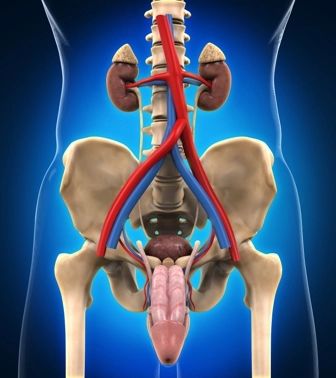Urology Coding Alert
Pinpoint Spot-On Coding for Laser Prostate Procedures
Understand what each code represents to better report the encounter.
All laser procedures of the prostate are not created equal – and some procedures your urologist reports aren't performed by laser. Before you assume you've easily conquered every claim, spend some time with our laser refresher.
Begin With a Solid Understanding of What Codes Represent
CPT® 2017 includes three code options for laser procedures of the prostate:
- 52647 – Laser coagulation of prostate, including control of postoperative bleeding, complete (vasectomy, meatotomy, cystourethroscopy, urethral calibration and/or dilation, and internal urethrotomy are included if performed)
- 52648 – Laser vaporization of prostate, including control of postoperative bleeding, complete (vasectomy, meatotomy, cystourethroscopy, urethral calibration and/or dilation, internal urethrotomy and transurethral resection of prostate are included if performed)
- 52649 – Laser enucleation of the prostate with morcellation, including control of postoperative bleeding, complete (vasectomy, meatotomy, cystourethroscopy, urethral calibration and/or dilation, internal urethrotomy and transurethral resection of prostate are included if performed).
What's happening: In layman's terms, you report 52647-52649 "when the physician uses a laser to coagulate, vaporize, or enucleate the prostate, an endoscope or resectoscope is inserted through the urethra to the level of the prostate and the prostate is visualized and treated," says Jonathan Rubenstein, MD, compliance officer and medical director for coding and reimbursement for Chesapeake Urology Associates in Baltimore.
During the procedure represented by 52647, the urologist directs laser energy at the enlarged prostate with a fiberoptic tube. Heat from the laser penetrates the prostate, destroys prostate cells, and creates scars in the prostate. According to CPT® Assistant (Nov. 2006), 52647 is intended to describe laser procedures that primarily heat the prostate and require sloughing for the treatment to be complete.
"Typically, coagulation represented by 52647 is done for BPH," Rubenstein says. "It's not used that often for cancer since cancer is most commonly found in the periphery of the prostate, whereas this treats the obstructing tissue on the inside of the prostate."
In 52648, the surgeon uses a laser to vaporize excess prostate tissue and seal the treated area. Vaporization is usually accomplished by moving a laser tip across the surface of the prostate, causing immediate vaporization of tissue and an end result that looks like a cavity (similar to the effect of a Transurethral Resection of the Prostate), says CPT® Assistant.
Enucleation is the removing an organ or other mass intact from its surrounding tissues. Laser enucleation of the prostate represented by 52649 shows that the surgeon used an instrument known as a tissue morcellator (or possibly the laser) to grind tissue into easily removable fragments. Once it's in fragments, the surgeon can easily remove all the tissue via irrigation.
The laser vaporization of 52648 is sometimes referred to as a PVP, or photoselective vaporization of the prostate. "The sweeping side-to-side motion vaporizes the excess prostate tissue to create a wider channel for urination," Rubenstein explains.
Extra tips: The type of laser your urologist uses does not help dictate your code choice. For example, he or she might use the Holmium laser to vaporize prostate tissue, but also to enucleate the prostatic adenoma (52649). In addition, urologists rarely perform laser coagulation of the prostate today (52647) because of changes in technology and equipment.
Seeing 'Laser' Doesn't Always Lead to 52647-52649
Some coders see the word "Holmium" mentioned in the urologist's documentation and presume the urologist performed a HoLEP (Holmium laser enucleation of the prostate) procedure and automatically report 52649, or a HoLAP (Holmium laser ablation of the prostate) procedure and automatically report 52648. But urologists are using the Holmium laser for more and more procedures, which is why you shouldn't automatically apply a code based on seeing the word "Holmium."
Example: Your urologist performs a transurethral incision of the prostate using the Holmium laser. If you were to just scan the documentation and upon seeing Holmium laser and prostate in the summary, you might be tempted to report 52647, 52648, or 52649, but none of those codes would be correct.
In this case, however, the correct code is 52450 (Transurethral incision of prostate) for the procedure even though the code descriptor doesn't include mention of the Holmium laser. It does not matter what technology the urologist uses to perform the transurethral incision of the prostate (TUIP).
He may use a laser, hot knife, cold knife, or other technique, but you should always report 52450.
Verify the Prostate Was Treated – Not Something Else
By the same token, verify that your surgeon treated the patient's prostate rather than another anatomic structure before you report 52647-52649.
Example: The urologist documents that he performed "fragmentation and removal of a prostatic stone by use of the Holmium laser." Code 52648 deals with ablation/enucleation of the prostate so you might be tempted to assign that code for this procedure. However, 52648 is not normally correct in this scenario because the urologist is dealing with a prostatic stone, not the prostate itself. You would only report 52648 in this situation if the surgeon lasered the stone and removed it while completing laser vaporization of the total prostate (and, in that case, the lasering and removal of the stone would then not be separately billable).
Solution: There is not a specific CPT® code for laser removal of a prostatic stone. Rather, a more appropriate code would be 52317 (Litholapaxpy, crushing or fragmentation of calculus by any means in bladder...or prostatic urethra... and removal of fragments; simple or small [less than 2.5cm] or 52318 (... complicated or large [over 2.5 cm]) based on the stone size.
"Billing CPT® 52317 or 52318 seems most appropriate, as it most closely describes the procedure performed and would potentially allow the reimbursement for the cost of the laser fiber used," Rubenstein explains.
Pay Attention to Bundling Edits
As the code descriptors indicate, you should not separately report vasectomy, meatotomy, dilation, urethrotomy, or resection of the prostate along with codes 52647-52649. Urologists occasionally perform these procedures prior to the laser treatment. The procedures are bundled into the laser codes and represent integral parts of the over-all procedure, explains Michael A. Ferragamo MD, FACS, clinical assistant professor of urology, State University of New York, University Hospital and Medical School, Stony Brook, NY. Do not separately bill for these procedures.
Similarly, one cannot bill a complex catheter placement or other urethral access procedures because payers consider these procedures inherent to gaining access to perform the procedure, Rubenstein cautions.
The Correct Coding Initiative (CCI) also bundles the laser prostatectomy codes with many other prostatic procedures for benign prostatic hyperplasia (BPH), including 52450 and TURP codes, Ferragamo points out. Be sure to check the CCI edits and your payers' specific bundling before billing 52647-52649 with other procedure codes.
Related Articles
Urology Coding Alert
- Surgical Coding:
Pinpoint Spot-On Coding for Laser Prostate Procedures
Understand what each code represents to better report the encounter. All laser procedures of the [...] - Documentation Tip:
Get Your Physicians to Document More Details Than 'Partial' or 'Complete'
Ensure that you know what they mean by each term. The extent of treatment of [...] - E/M Coding:
Keep Concurrent Claims Clean by Remembering These 5 Guidelines
Track the work of all involved providers to report correctly. Concurrent care occurs when two [...] - You Be the Coder:
Verify Incision Before Filing Your Claim for S/P Tube Removal
Question: What is the correct procedure code for removal of a suprapubic tube? Rhode Island Subscriber [...] - Reader Question:
Report 51720 Even for At-Home Voiding
Question: We're in disagreement about which CPT® code to use for BCG bladder instillation due to [...] - Reader Question:
Steer Clear of +69990 With 55400
Question: My urologist completed a microscopic vasovasostomy, which we normally report with 55400. He used a [...] - Reader Question:
Check Whether Modifier 22 Might Apply to Extensive Case
Question: The urologist placed the ureteroscope to visualize the patient's stone. She saw the stone, but [...] - Reader Question:
Multiple Stones Don't Always Mean Multiple Charges
Question: One of our patients was scheduled for an ESWL (which I would normally code as [...] - Reader Question:
Some Coders Say You Don't Always Wait on Labs to Report UTI
Question: If a patient has urinary symptoms, our physician orders a dip stick and prescribes antibiotics. [...] - Reader Question:
CCI Edits Bundle 60540 Into 50240
Question: The urologist performed a left adrenalectomy and partial upper pole nephrectomy for a patient who [...] - Reader Question:
Get the Lowdown on Exam Levels for Novartis
Question: Our urologist mainly treats patients from New Jersey, but also sees many from Pennsylvania. I've [...]




